Children's armor - the latest and most beautiful
In it, women, men - all actors,
They have their own exits, cares,
And everyone does not play one role.
Seven acts in that play.
First, the baby
Vomiting with a roar in the arms of the mother ...
Then - a whiny schoolboy with a book bag,
Washed to a gloss, reluctantly, by a snail
Crawling to school. And then?..
As You Like It by William Shakespeare. Translated by T. Shchepkina-Kupernik.
History in detail. We continue our story about children's knightly armor, and I would like to start today with a reminder that all this armor ... is not combat! No one seriously expected that a child of 7-10 years old would fight in them! That is, it was ceremonial, ceremonial armor that served as representative clothing, and no more. Although, of course, wearing them developed muscles and represented good military training. From childhood, the future armored man merged with his metal suit and subsequently wore it without even noticing. The social function of children's armor was especially clearly manifested in the XNUMXth-XNUMXth centuries. Since it cannot be assumed that the boy went to war, it becomes obvious here that the boy's armor was an iconic expression of a lifestyle, a symbol that more defines his status than a military weapon of defense. The social ideal of a man, even the youngest, was the ideal of a warrior. Dressing boys in armor, adults emphasized their social status, because armor is the dress code of the nobility. Moreover, the astronomical cost of such ceremonial armor corresponded to the obligation of the court society to be extravagant, since the boy had to outgrow them literally in a year.
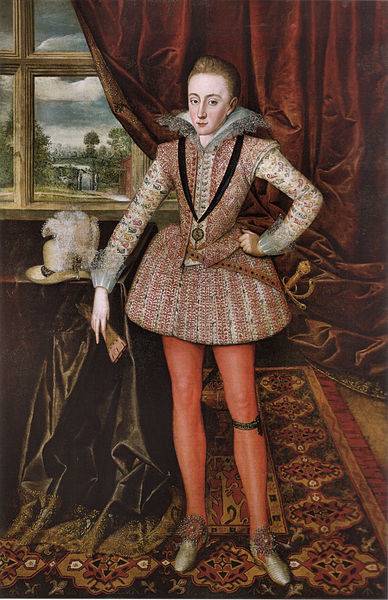
"Henry Frederick Stewart, Prince of Wales". OK. 1610 Portrait by Robert Peake the Elder (1551–1619). National Portrait Gallery, London
The collection of the Royal Arsenal in Leeds does not contain examples of children's weapons of the Tudor era, but there is a lot of illustrated evidence of this period, that is, many portraits of boys dressed in armor have survived from that time. Painting such portraits was an important family event during Tudor times. Only the richest people could afford it, and they did not miss the opportunity to impress others. The dress was the best, carefully chosen to show wealth and status. Interestingly, looking at these portraits, you can find out that while the boys were in the nursery, they wore skirts, like their sisters. They entered the adult world when they were already "in pants", usually at the age of 5-7 years, and at official events they already wore adult men's clothes.
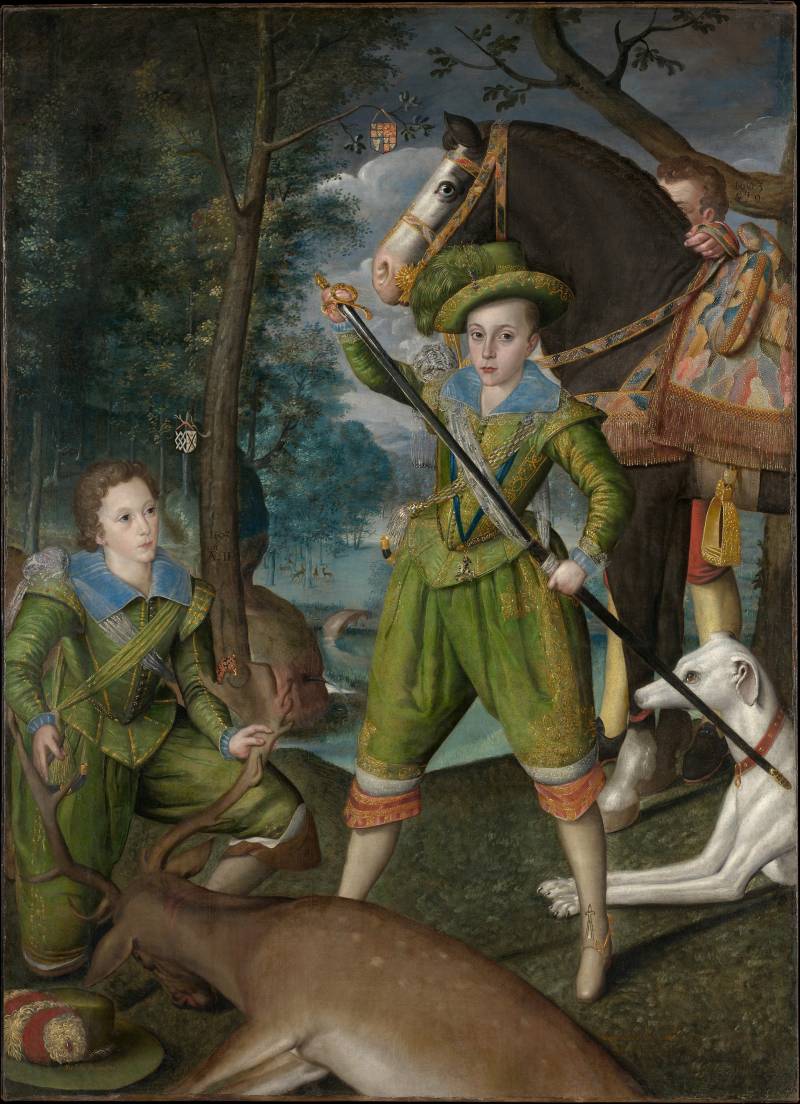
"Henry Frederick Stuart, Prince of Wales and John Harrington (1592–1612) on the Hunt". Robert Pick the Elder. Metropolitan Museum of Art, New York
On group portraits of the XVI-XVII centuries. it is the presence of edged weapons that is often the only way to distinguish younger boys from girls. In the portraits, the boys pose with their hand on the hilt of the rapier, which indicates that stabbing weapons were extremely widespread at that time. Their hilts became more complex, so that armored gauntlets lost all meaning, but a dagger for the left hand appeared on the belt. The presence of such a rapier and a dagger primarily indicates the spread of the Italian fencing school, that is, the frontal position of one fencer in relation to another. True, the position of the hand on the hilt often hides it, and it is not possible to see how it works.
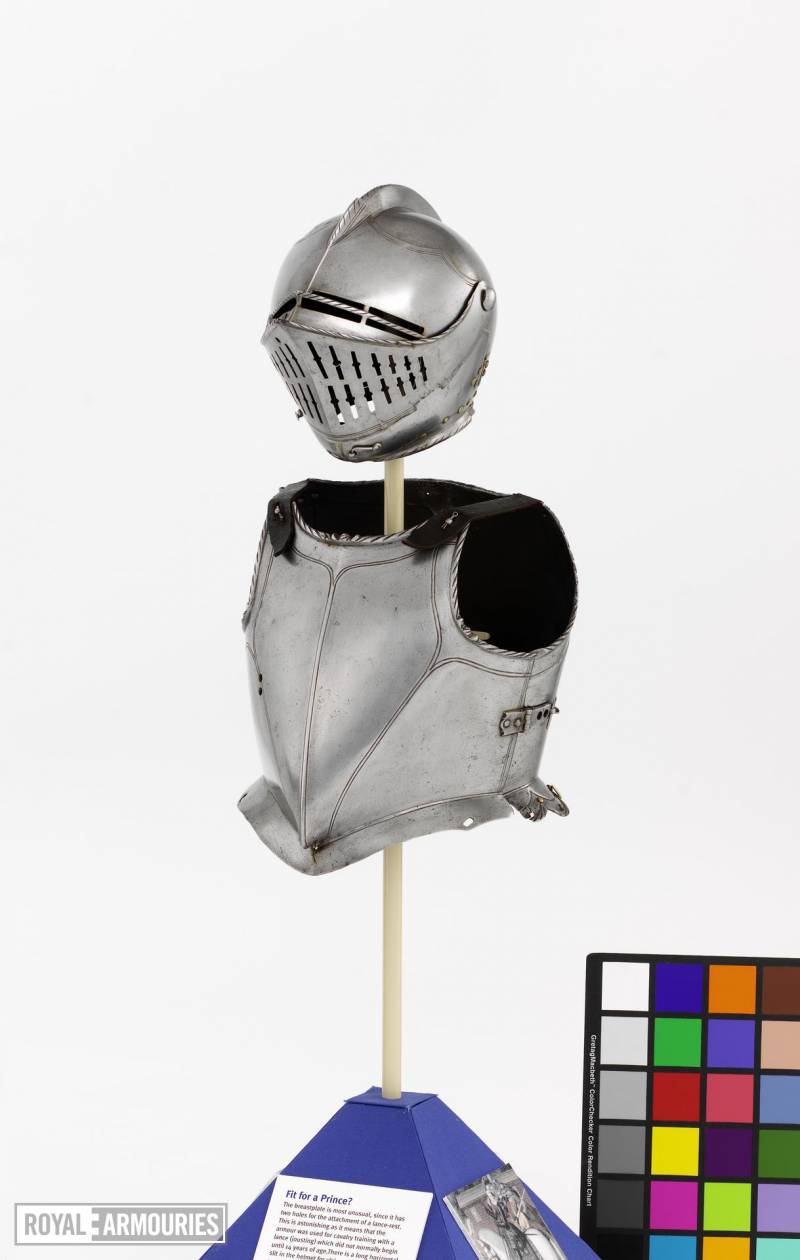
Armor for a boy, 1605. Helmet weight 1,44 kg. The weight of the cuirass is 2,12 kg. The armor is interesting in that the cuirass has two holes for attaching a spear hook. That is, the owner of this armor should have been taught to use a spear while sitting on horseback. Royal Arsenal, Leeds
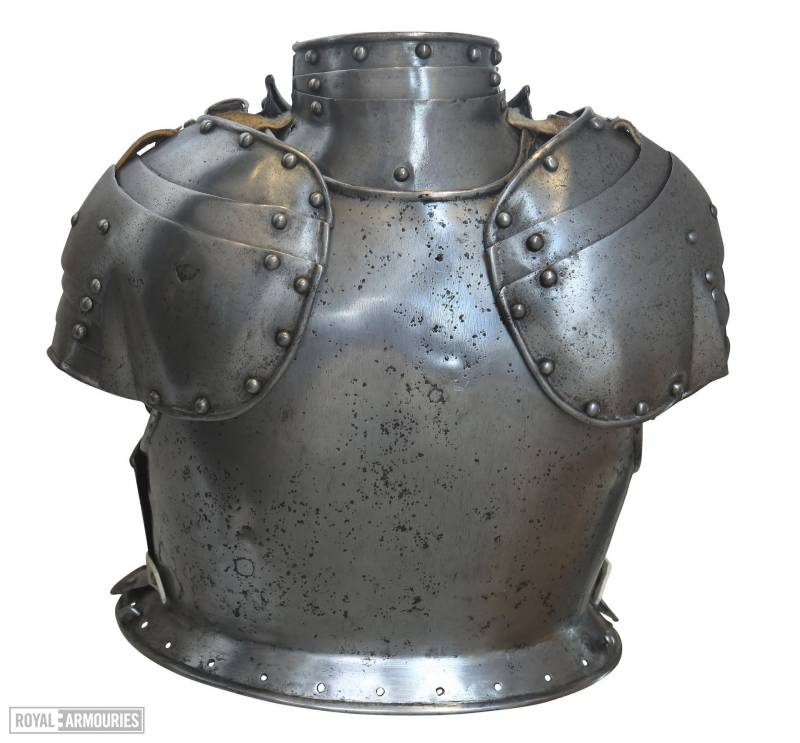
Children's cuirass, 1601-1630 Royal Arsenal, Leeds
In many portraits, the royal offspring are depicted in armor specially commissioned for them. Unfortunately, not all of them have survived to our time, but some, in particular the armor of King Charles I, have survived.
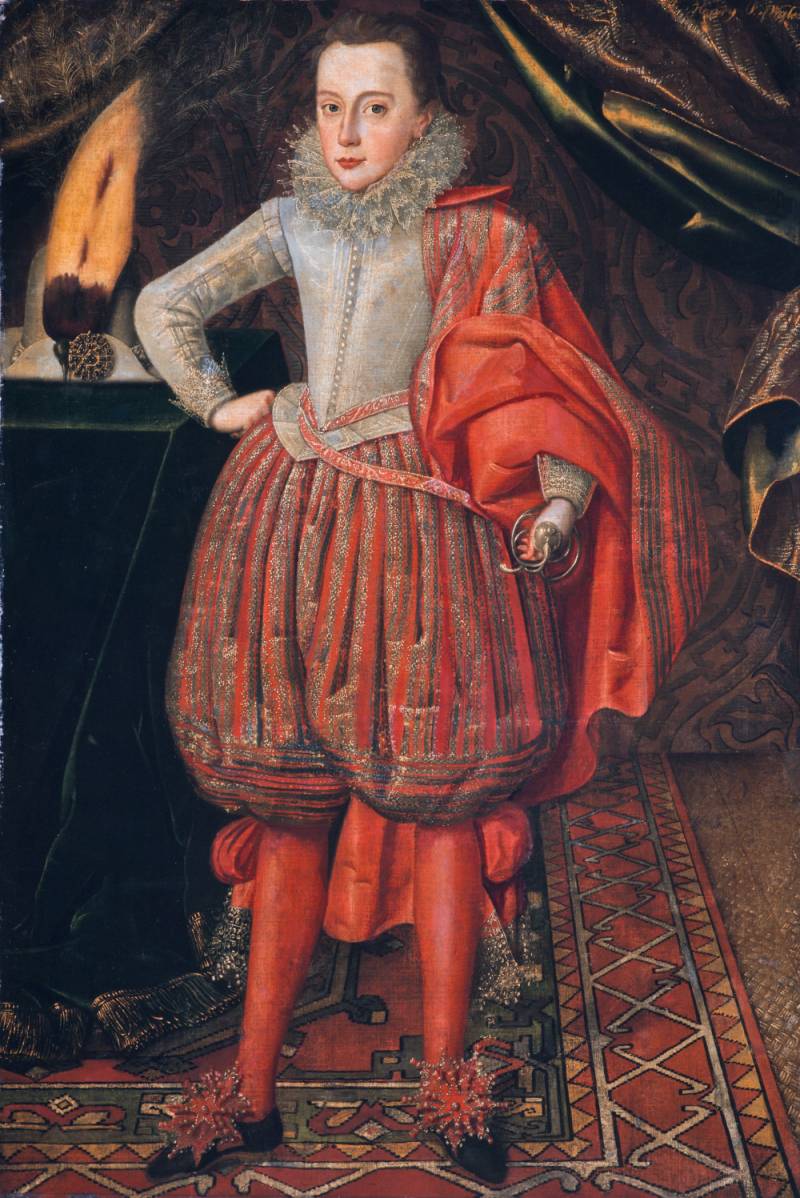
"Charles I in his youth". Robert Pick the Elder. National Scottish Portrait Gallery, Edinburgh
Armor of King Charles I and also Charles II, c. 1615, were made when he was about 15 years old, and possibly when he became Prince of Wales. It later passed to his son Charles II and then to his grandson William III. It weighs 19,5 kg, which is the normal weight for an adult armor. This armor is stylishly and richly decorated with narrow gold stripes with swirling foliage. The drawing is engraved with punches. The steel plates of the saddle and even the protection of the horse's head (chaffron) are decorated in tone. The armor is a headset. It has additional parts that allow it to be used for foot combat as well. By donning a cuirass and adding an open helmet of burgignots, tassets on the hips and a large round shield, it could also be used in foot combat.
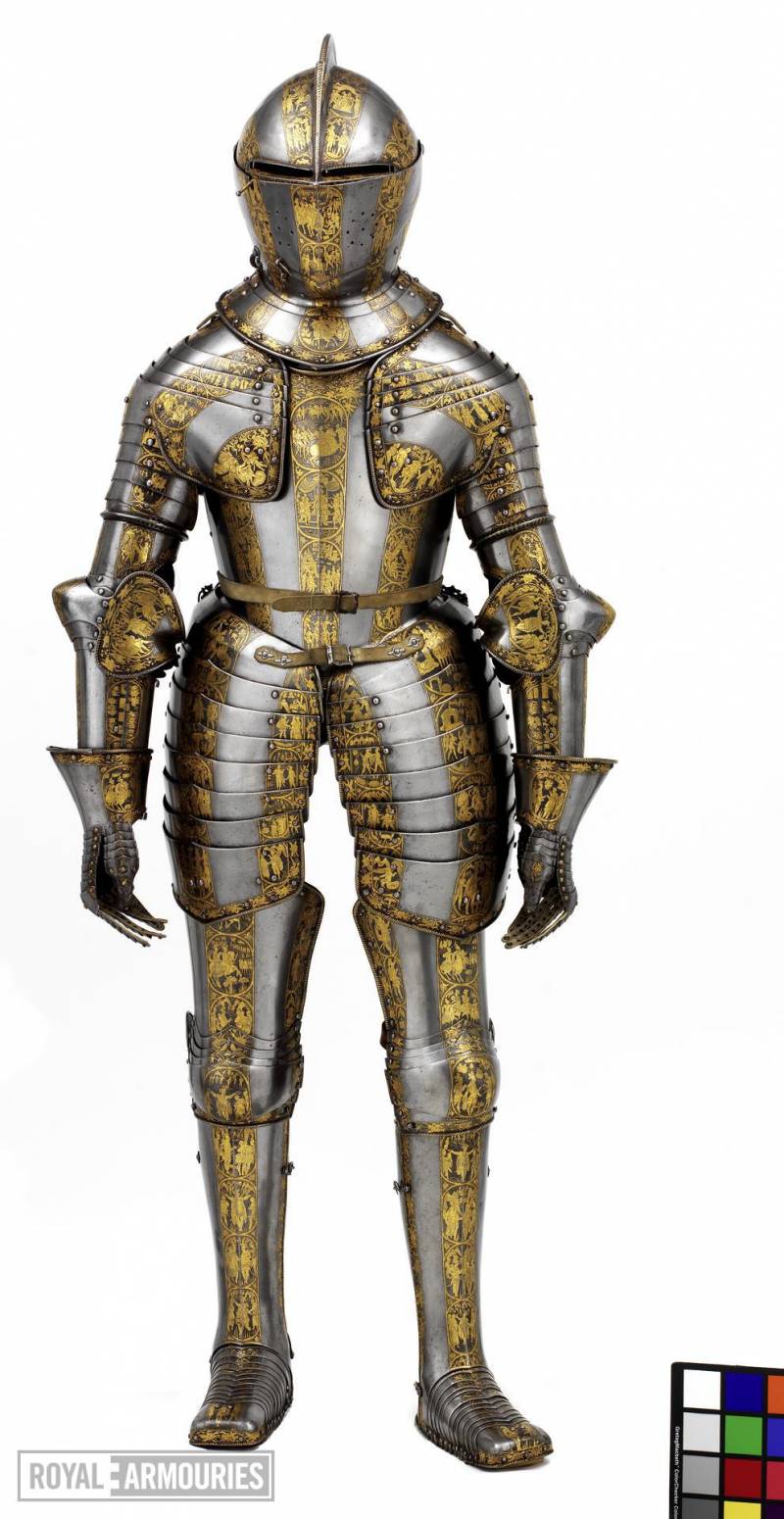
And here is a gift armor, decorated with a story about the campaigns of Alexander the Great, which was presented in 1608 to the eldest son of Jacob I, Prince Henry, who died in 1612 at the age of 18. Sir Horace Vere, while serving in the Netherlands, undoubtedly tried to enlist the support of the heir to the throne in his military and political career, so he ordered and presented this armor to him. Many in the XNUMXth century regarded Alexander as the greatest military hero of antiquity. Therefore, it is not surprising that contemporaries made flattering and optimistic comparisons between Alexander and Henry. The armor decoration can be seen as a continuous narrative from the sabatons to the helmet, flowing around the body as Alexander and his army move through Palestine, the Middle East, Asia Minor and India before his return to Babylon and his death. There is every reason to believe that this armor was worn by Prince Henry, and may have been thinking about Alexander's campaigns and the situations he might face as king. Royal arsenal. Tower of London
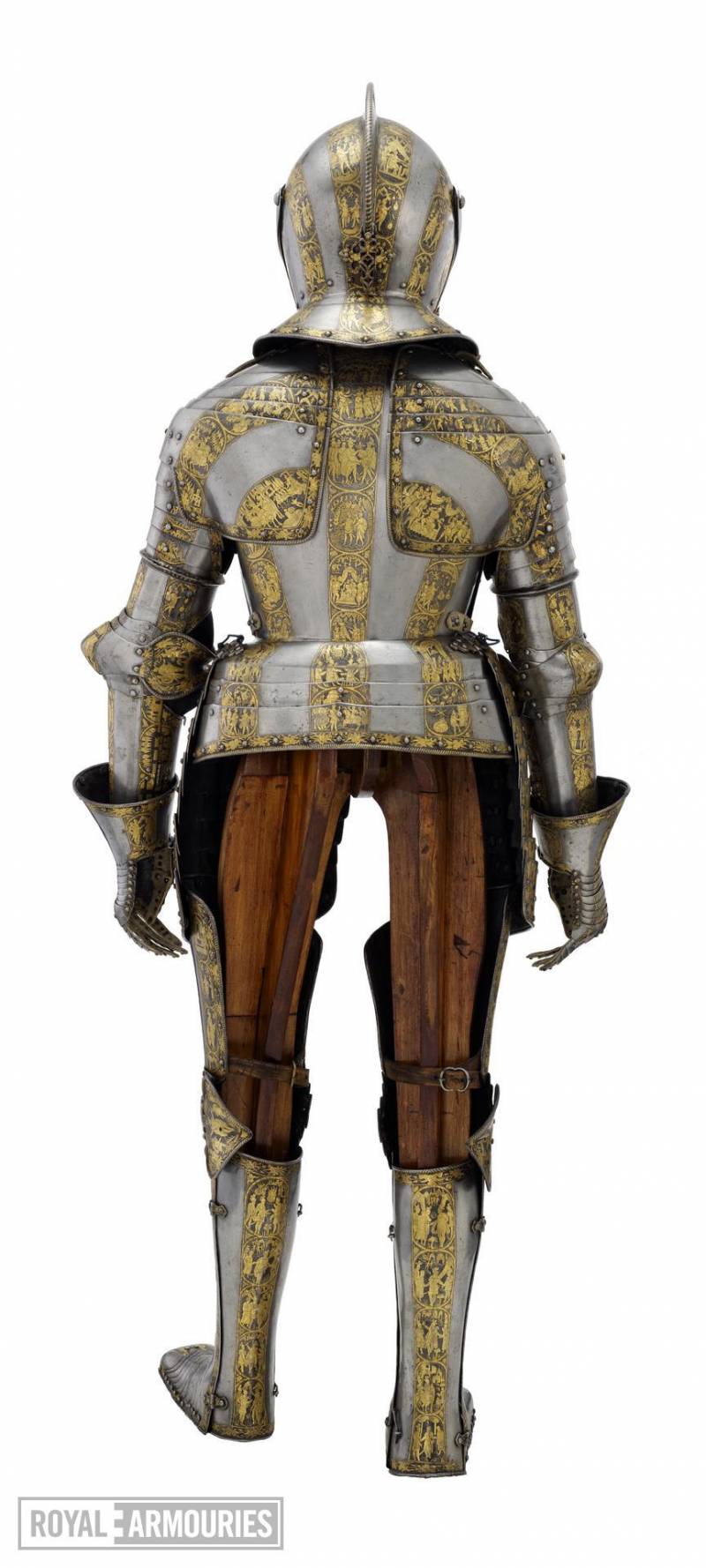
The same armor, rear view
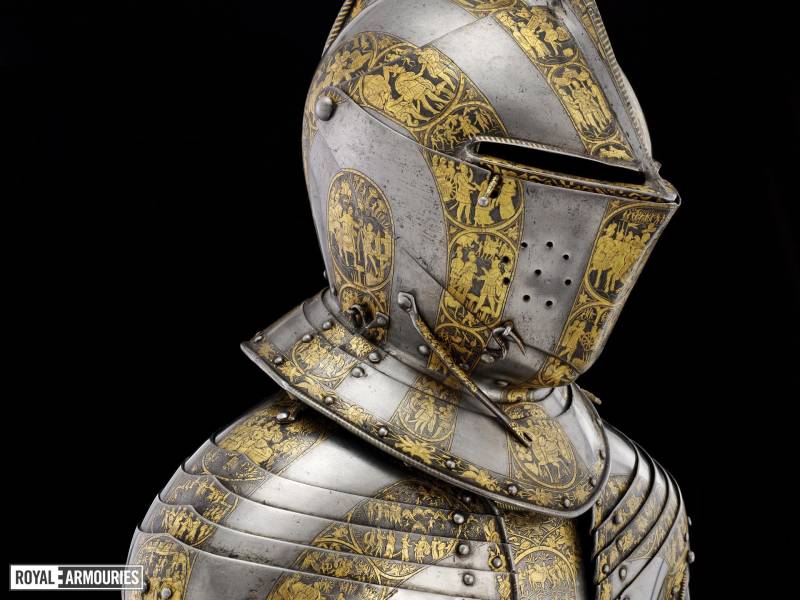
Helmet with scenes from the life of Alexander the Great
In Europe, armor for the children of the nobility, and its highest echelons, was the norm. No Tyrolean nobleman, socially just below the sovereign, could afford to equip his children with small armor. But the kings and dukes could well afford it and ... willingly allowed it. Known, for example, children's armor for foot combat, German, probably Augsburg, dated 1610. This armor was made for two brothers aged about 8 and 10 years. Perhaps they were intended for the sons of Friedrich Wilhelm, Duke of Saxe-Altenburg. The two boys must have enjoyed "practicing" with each other. There is no leg protection because they fought through the barrier. Unlike knightly armor, which had better protection on the left side and a spear rest on the right side, this armor is completely symmetrical. That is, boys could strike and receive blows on both sides of the body. They fought with blunt weapons, so that the armor and clothing worn underneath would protect against anything but minor bruises.
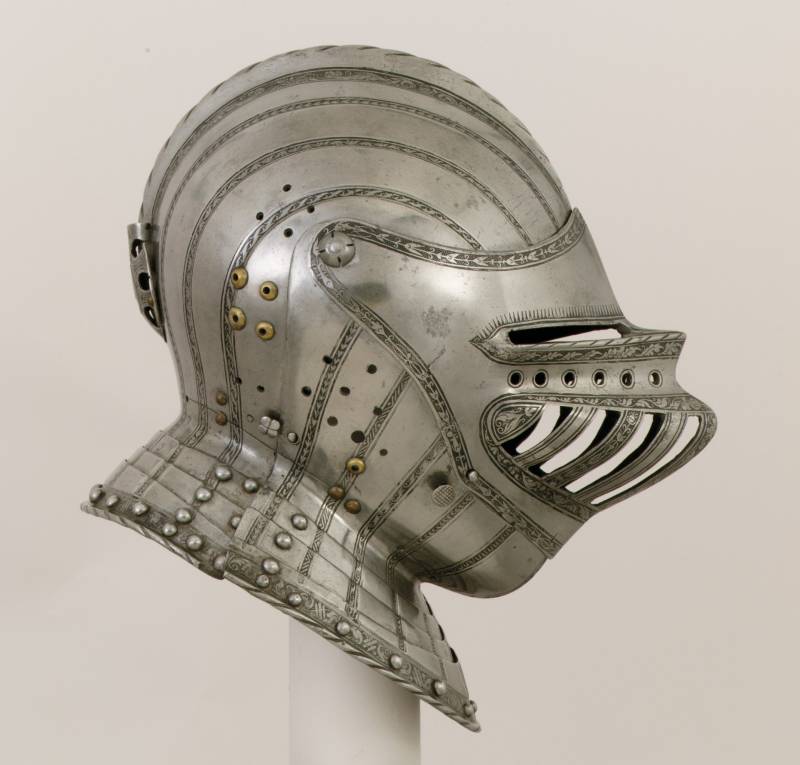
This skillfully forged helmet, whose openwork visor was clearly not intended for combat, was made for a boy. The characteristic one-piece visor with a curved profile and engraved decoration in the style of Daniel Hopfer recalls the later work of Kohlmann Helmschmied from Augsburg. OK. 1530-1540 Augsburg. Weight: 1921 Metropolitan Museum of Art, New York
Also known is children's armor for Ferdinand Charles, the eldest son of Archduke Leopold V and the future ruler of Tyrol, which was commissioned by Claudia Medici, the mother of Ferdinand Charles. The armor is somewhat archaic, although the time of its manufacture is the second quarter of the 1627th century. It was made by Hans Frick, who first worked as an apprentice for the Innsbruck court master Jacob Topf. Moreover, since XNUMX, Frick was already the court gunsmith of Innsbruck, that is, he managed to prove his skill to everyone. However, the most famous masters also made children's armor, just not all of them have survived to our time.
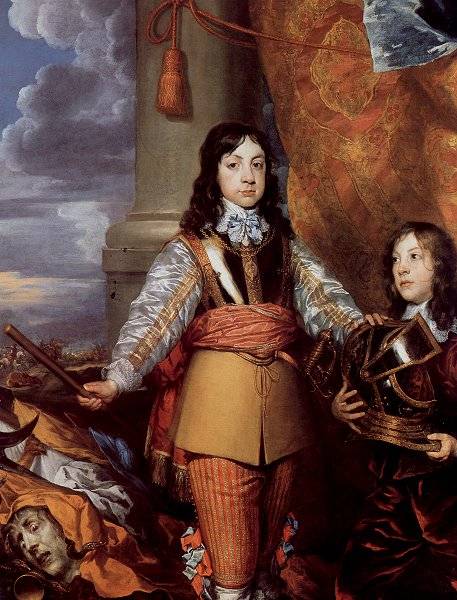
The Prince of Wales, the future King Charles II, is dressed in the traditional horseman's leather tunic and Greenwich-style cuirass. Portrait by William Dobson (1611–1646), 1642 National Gallery of Scotland, Edinburgh
It is possible that the infantry armor of the Infante Louis, Prince of Asturias (1707–1724) is the last royal armor made in Europe. It is believed that this armor was presented to the five-year-old Infante Louis (1707–1724), Prince of Asturias, by his great-grandfather Louis XIV of France (1638–1715, reigned from 1643). Louis was the first Spanish heir of the Bourbon dynasty to the Spanish throne and briefly ruled as Louis I in 1724. The inscription on the armor probably refers to Jean Droir (died before October 1715), the royal armourer. Drouart was one of the last practicing gunsmiths active in France by 1712.
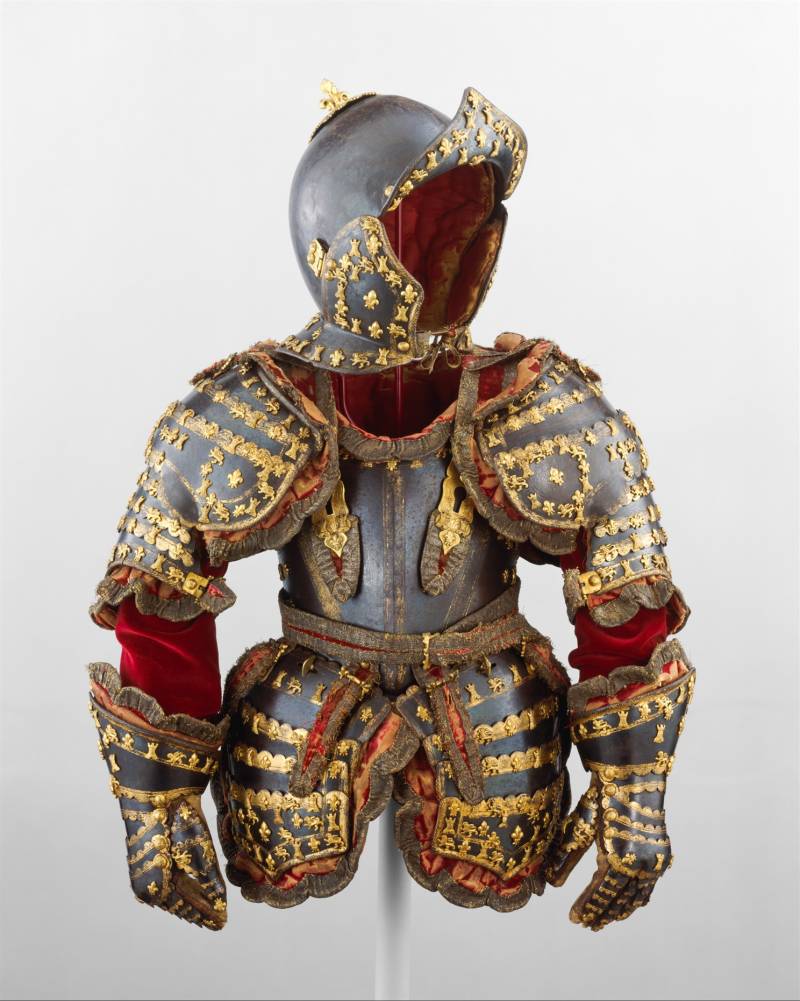
Armor of Prince Louis of Asturias. Metropolitan Museum of Art, New York
The armor is notable for its preservation. It retains its shiny blue and gilded surfaces and nearly all of its original red silk lining. The gilded heads of the rivets have a heraldic design - the lion of Leon, the castle of Castile and the fleur-de-lis of France.
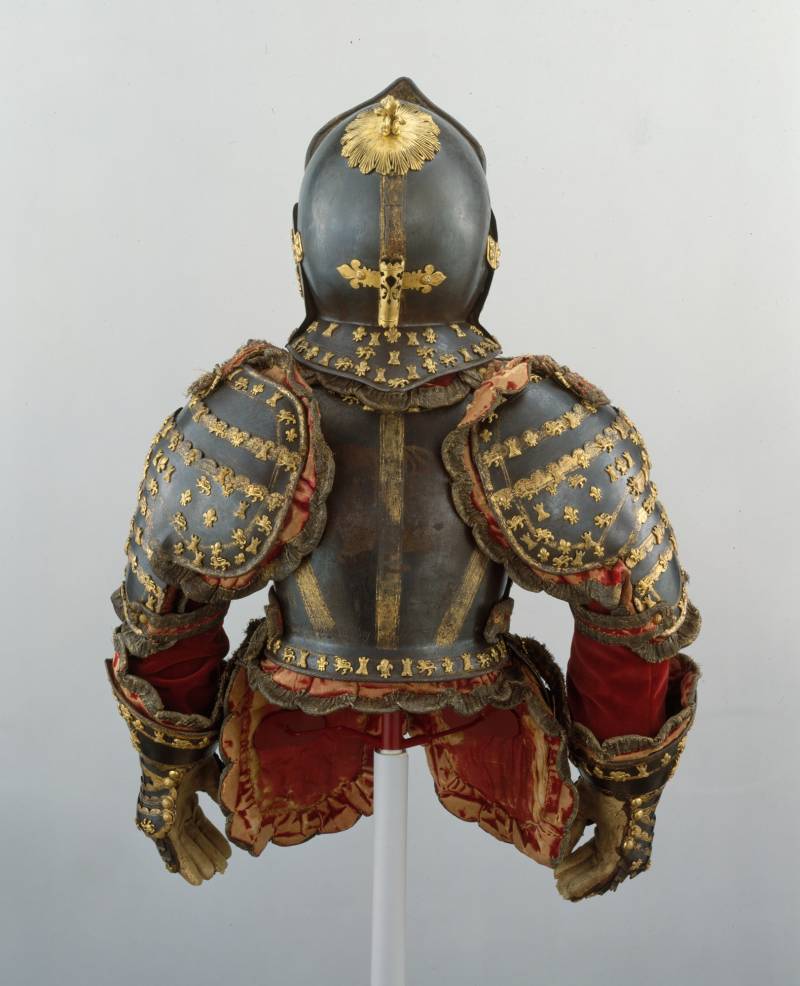
Armor of Prince Louis of Asturias. Back view. Metropolitan Museum of Art, New York
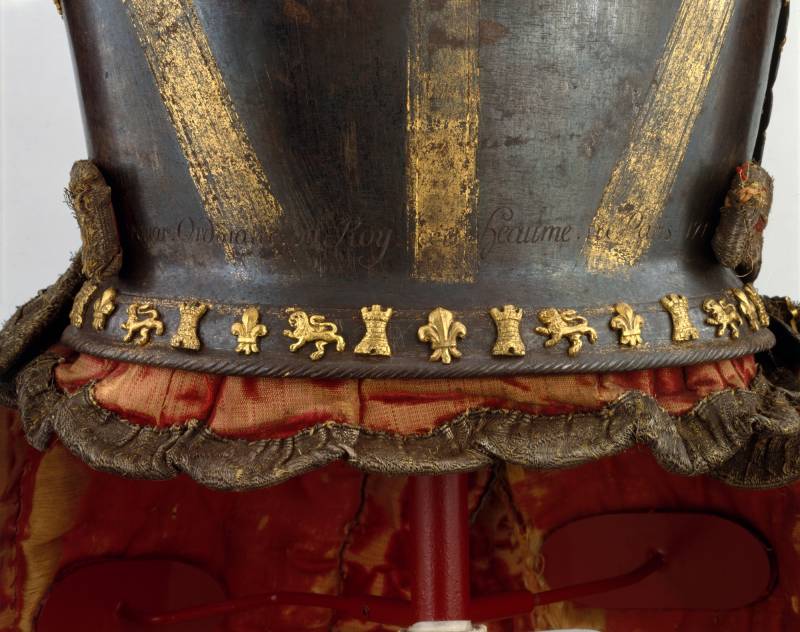
Chased gilded lining on the cuirass and the signature of the master on its back. Metropolitan Museum of Art, New York
Well, our acquaintance with children's knightly armor has ended. They were, yes, and there were many of them, moreover, in different countries and at different times. Many that have come down to our time are very beautiful. That is, even then all the best was given to children ... In terms of capabilities, of course, which for everyone, even for the nobility, differed quite a lot.
PS
The author and the site administration express their sincere gratitude to A. Sviridov for his help in preparing this material.
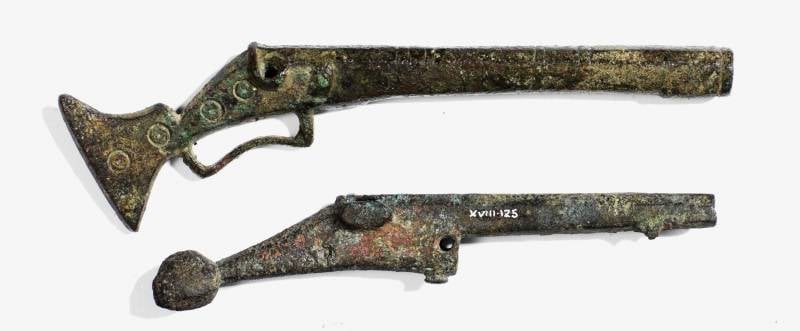
Information